5 Best Tricep Workouts With Cables (with Pictures!)
In traditional weightlifting culture, the use of resistance machines is often overlooked for one reason or another - a mistake in certain respects, as there are few workouts as effective at isolating small muscle groups as those involving the cable machine.
The muscles of the arms in particular respond very well to the lengthy time under tension and high capacity for volume that is offered by cable-based exercises, many of which have become a staple in bodybuilding workouts.
For building significant mass in the triceps, there are few exercises as effective as those of the cable machine, with movements like the cable rope pulldown, cable overhead triceps extension and even the less popular cable skullcrusher all being excellent tools for growing the triceps brachii in isolation.
What are the Triceps, and How are They Worked?
The triceps brachii (not to be confused with the triceps surae or femoris) are a three-headed muscle group located along the anterior and lateral portions of the upper arm.
In effect, they are responsible for elbow extension and stabilization of a number of other arm-related biomechanics, many of which are used in day-to-day activities.
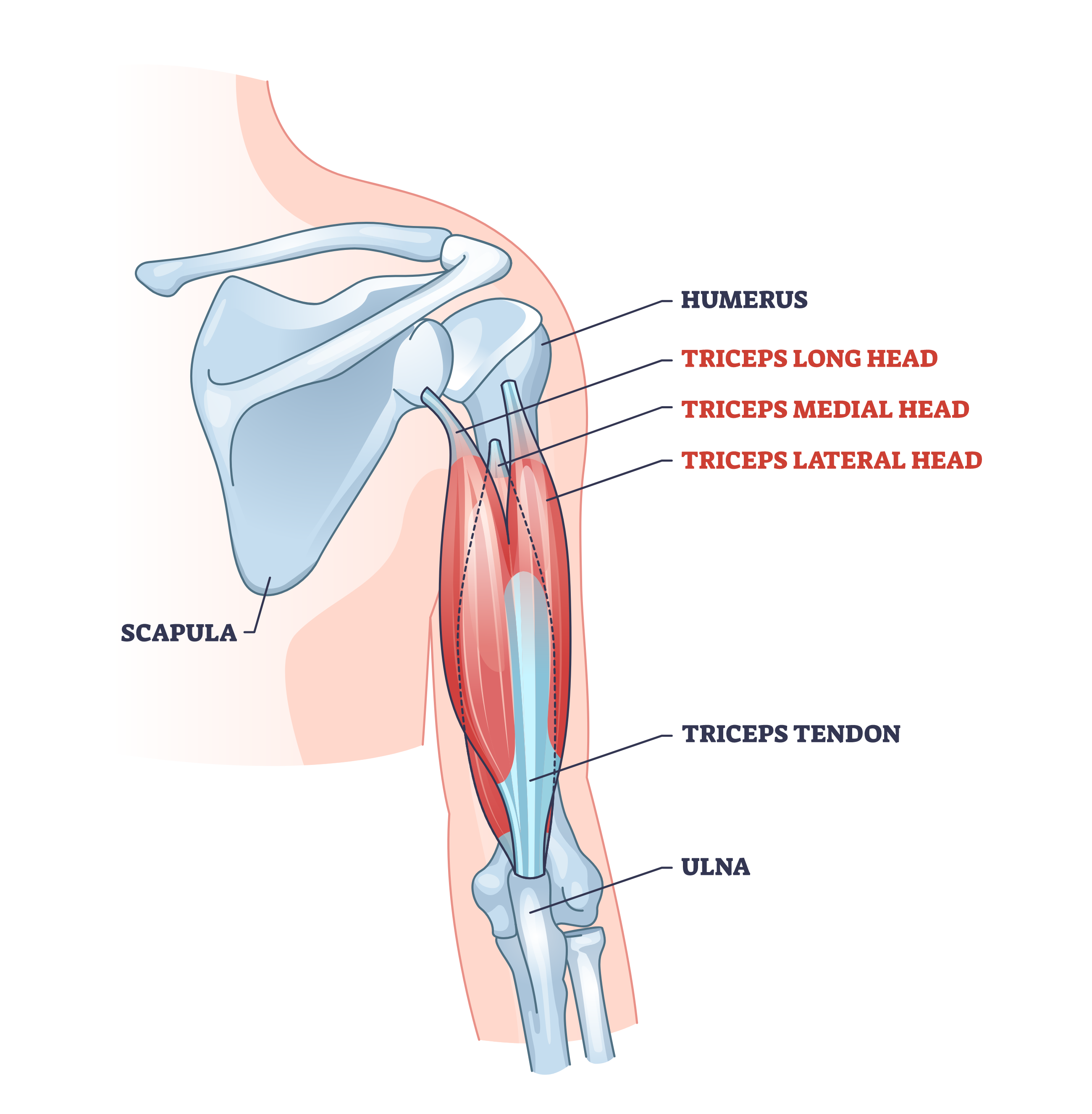
For bodybuilders, the triceps are of particular importance, as they can contribute up to two-thirds of the visible mass of the upper arm, and as such it is quite common for lifters to induce hypertrophy of the muscle so as to develop larger and more defined arms as a whole.
What Exercises Use the Triceps?
Though the triceps are primarily used in movements involving extension of the arm (pictured below), they are also an antagonist to elbow flexion, and as such are actually quite frequently involved in many weightlifting exercises.
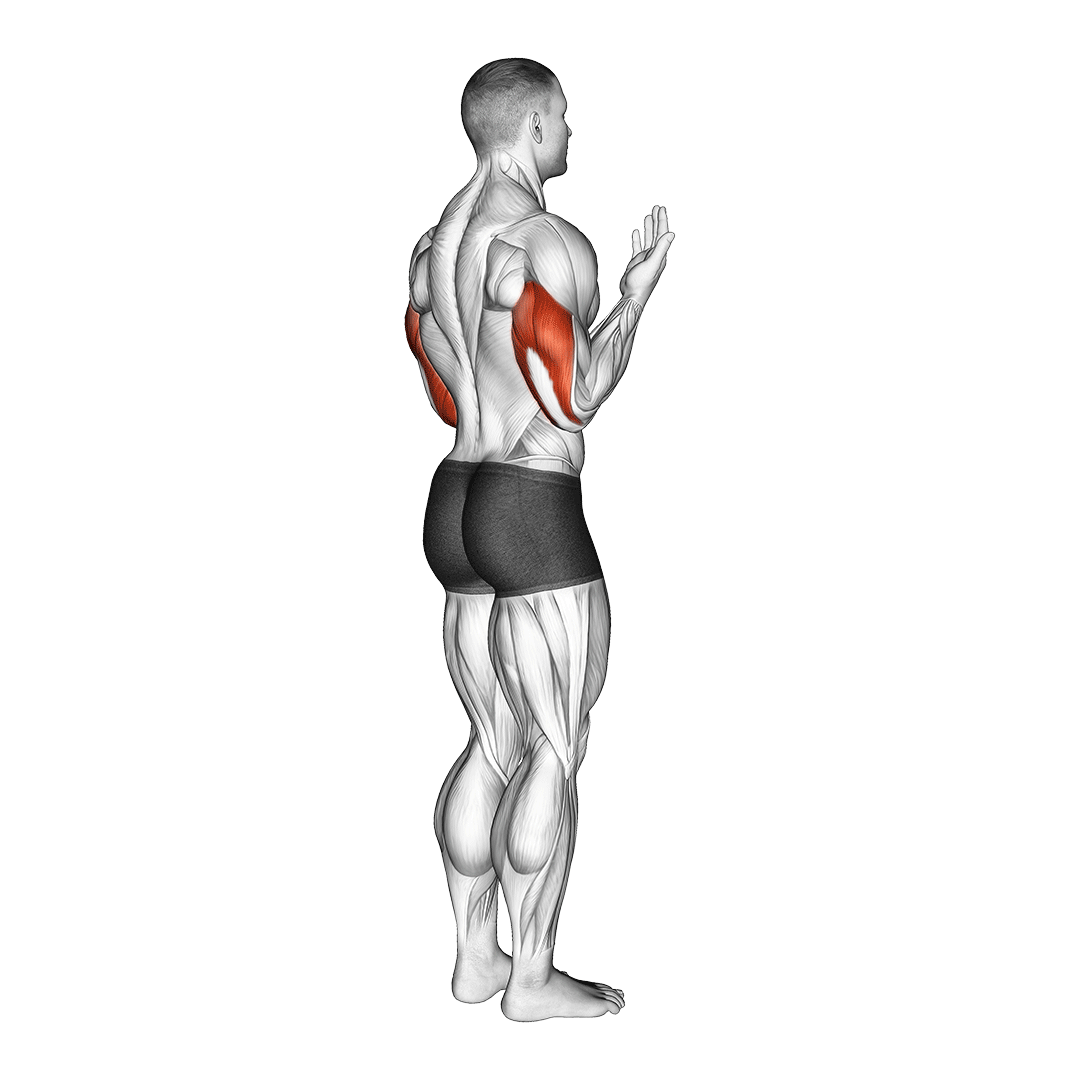
Among the most common exercises involving the triceps are the bench press, the overhead press, the push-up and the dip - all of which involve some level of elbow extension.
Benefits of Training the Triceps With Cables
Apart from benefits that are unique on an exercise-by-exercise basis, there are several positive effects that are associated with those exercises performed through the use of a cable machine - many of which are not present in free weight exercises.
Long Time Under Tension Means Better Hypertrophy
It is no secret among bodybuilders that muscular hypertrophy is dictated (in part) by the length of time in which a muscle is placed beneath resistance or tension.
Cable machine exercises excel at this aspect in particular, as they provide a near-constant level of resistance for as long as the lifter is performing the set.
This means that the triceps are worked continuously with and between each repetition, thereby resulting in larger and more defined upper arms.
High Capacity for Volume
The resistance of the cable machine is self-stabilizing and as such is less likely to result in fatigue or failure of stabilizer muscles in an exercise.
In turn, the lifter will find that this equates to a greater capacity for volume per workout, allowing comparatively more repetitions to be performed for the same level of exertion.
Higher volume of the triceps per workout will equate to greater hypertrophy and endurance developments, hence the frequent usage of cable-based triceps exercises as accessory movements in many training programs.
Safer Than Free Weight Exercises
Though all exercises are safe when performed correctly, triceps exercises that make use of the cable machine are especially so, as they usually have little to no impact on the joints of the body, and will only rarely place the body in a disadvantageous position.
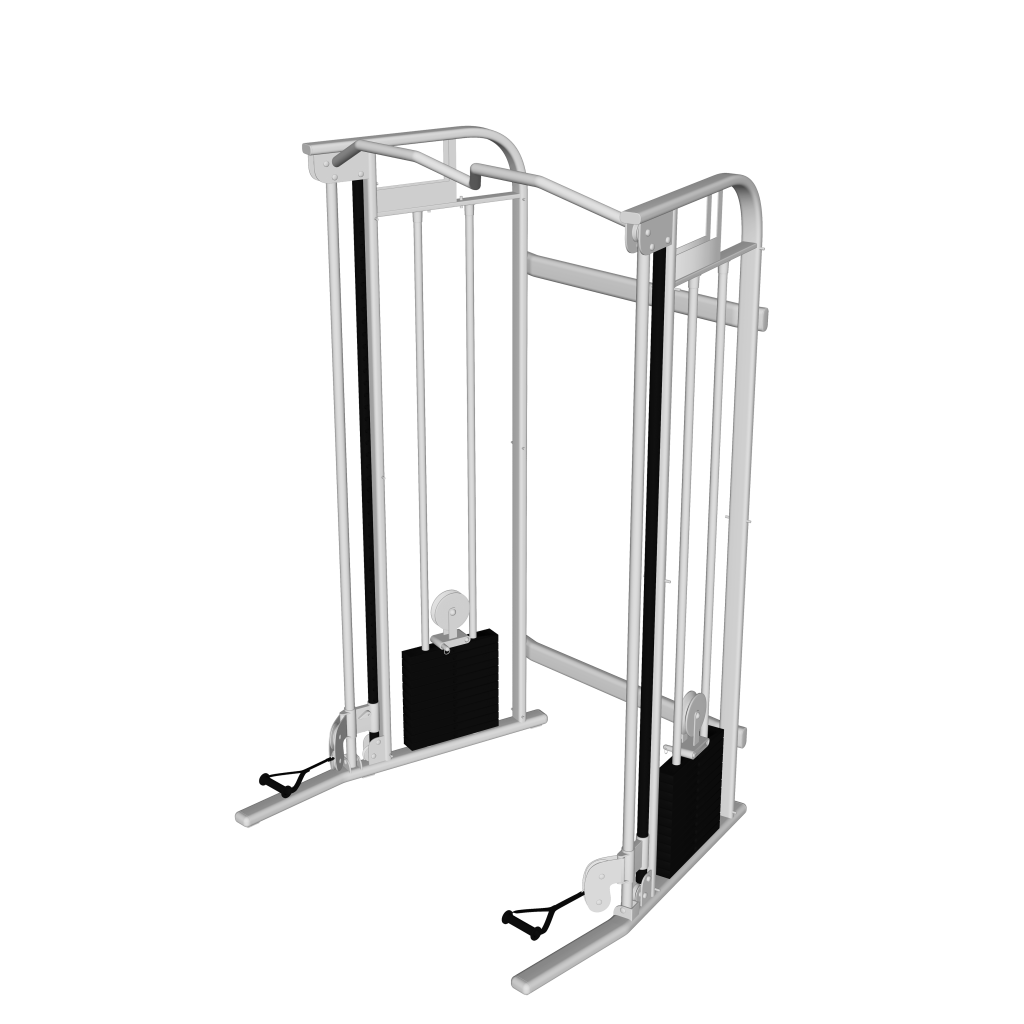
For individuals unfamiliar with resistance training mechanics or those with poor triceps stability, cable exercises may be one among the best options for exercise selection.
Tricep Workouts or Exercises With Cables
1. Tricep Rope Pulldowns
The quintessential cable triceps exercise - the tricep rope pulldown is a bilateral triceps isolation exercise most frequently performed for multiple high volume sets, especially by bodybuilders wishing to improve the width of their arms.
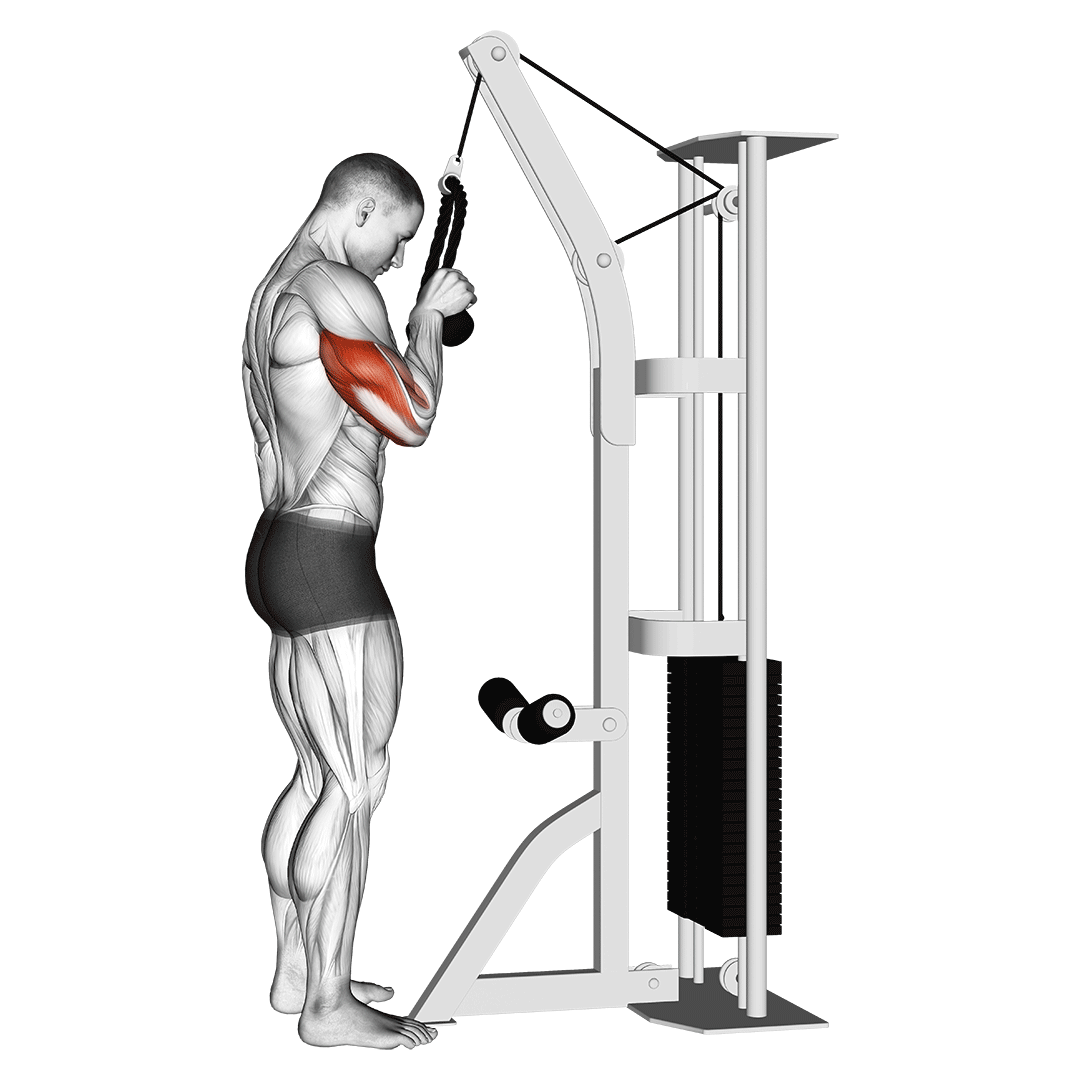
Tricep rope pulldowns involve the use of a rope attachment, and are performed with the lifter in an upright position for sets between 8 and 20 repetitions each.
Muscles Worked by Tricep Rope Pulldowns
Tricep rope pulldowns are an isolation exercise and will solely train the triceps brachii - though they are noted for placing greater focus on the long or lateral head of the triceps as a result of the neutral grip used.
Benefits of Tricep Rope Pulldowns
The main benefit of tricep rope pulldowns - in comparison to other tricep exercises - lies in its rather forgiving hand position.
Because of the pliability and neutral grip of rope handles, lifters will find that they are able to achieve a more comfortable grip and arm width, thereby reducing the wrist strain that is normally a complaint of exercises like the cable pushdown or reverse curl.
How-to do Tricep Rope Pulldowns
To perform a repetition of tricep rope pulldowns, the lifter will stand facing the cable housing with both ends of the rope gripped in their hands, torso tilted slightly forward and core braced so as to avoid cheating the repetition.
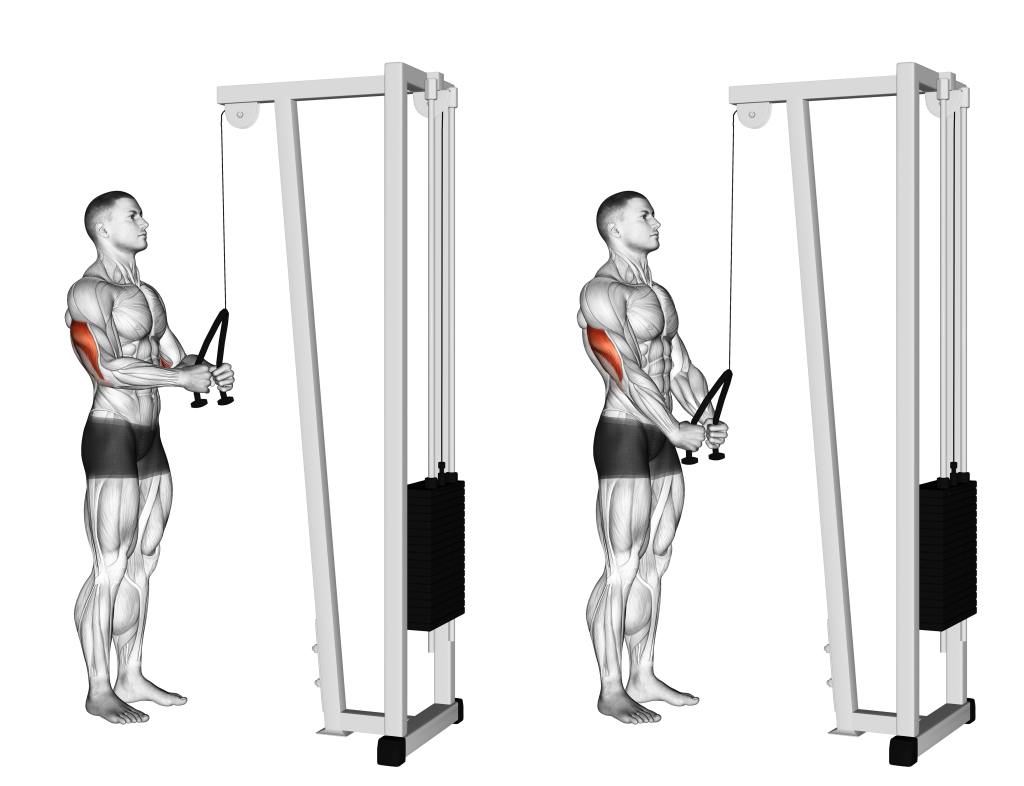
Drawing the rope to approximately chest height, they will then lock the upper arms against the sides of the torso before bending at the elbows, pulling the rope downwards until their arms are nearly at full extension.
Squeezing the triceps, they will then reverse the motion, returning the rope to chest-elevation and thereby completing the repetition.
2. Tricep Cable Pushdowns
Actually a type of different exercises characterized by an upright position and the act of “pushing” a handle against the upward pull of the cable machine; tricep cable pushdowns are likely the most common form of cable tricep exercise, as they are not only effective at building triceps strength but also as simple as an exercise can get.
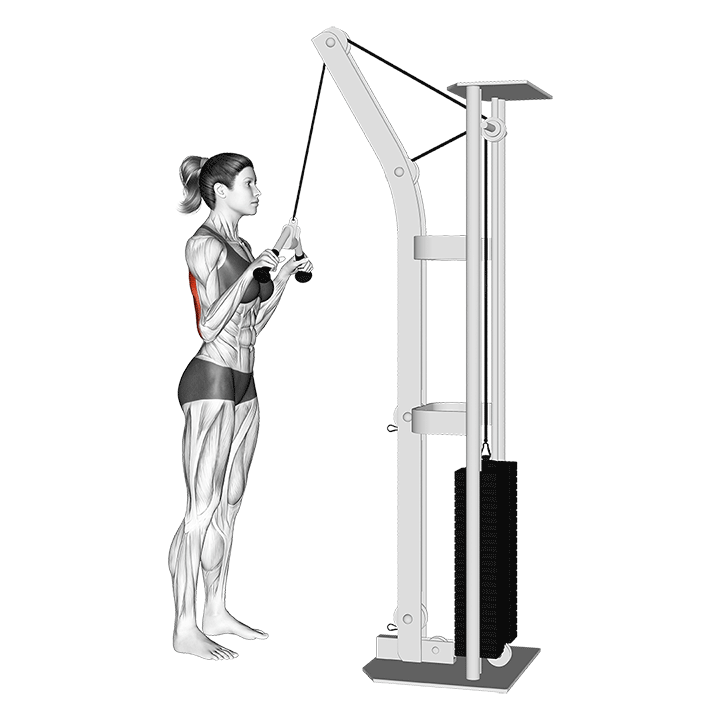
All tricep pushdown exercises will feature the cable housing being immediately overhead to the lifter, an overhand grip and the usual characteristics of a single-joint isolation exercise.
Muscles Worked by Tricep Cable Pushdowns
The majority of tricep cable pushdown exercises are isolation movements, and as such solely train the triceps brachii - though the focus of the exercise (i.e. which head is utilized the most) will vary depending on what sort of grip is used.
Overhand pushdowns will place a greater focus on the inner and medial head of the triceps, whereas neutral grip pushdowns will better target the long or lateral head instead.
Benefits of Tricep Cable Pushdowns
Tricep pushdowns are quite effective at placing resistance on the entirety of the triceps in an isolated manner - often more so than other triceps isolation exercises, hence the frequent inclusion of cable tricep pushdowns into strength-focused training programs.
Furthermore, the dozens of different variations of tricep pushdowns equate to a lifter having no shortage of choice, be it for a more comfortable exercise or one of more specific training focus.
How-to Perform Tricep Cable Pushdowns
To perform tricep cable pushdowns, the lifter will stand upright and facing the machine, cable housing set overhead.
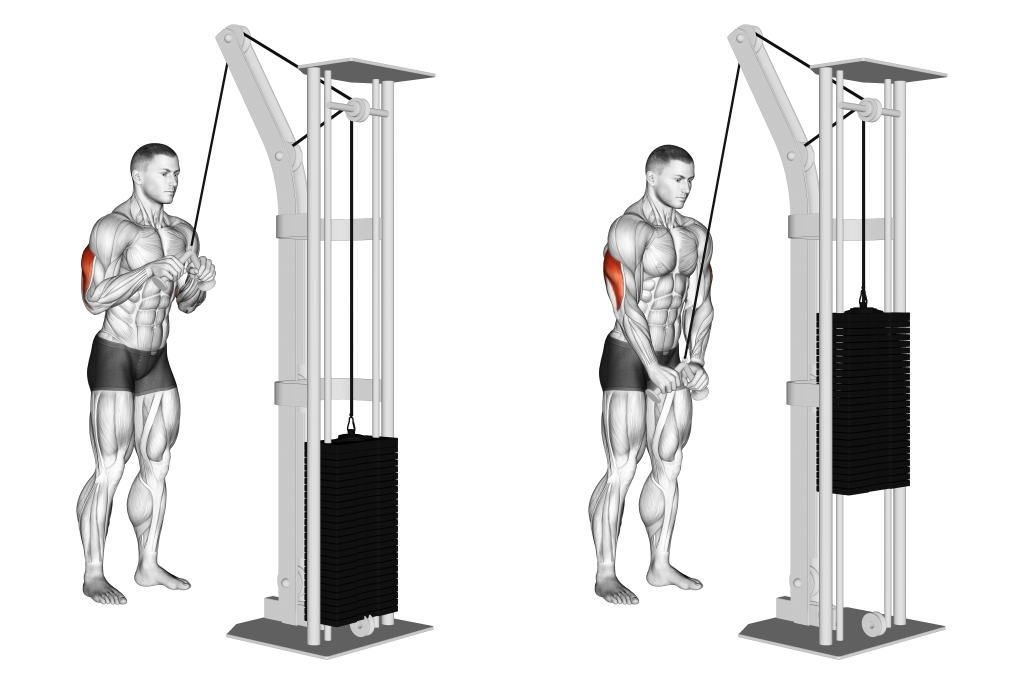
Gripping the handle at approximately chest height, they will “glue” the upper arms to the sides of the torso before pushing the handle downwards, ensuring that no momentum or swinging of the torso occurs.
Once the arms are nearly fully extended, the lifter will then reverse the motion, allowing the handle to return to its original position at chest height.
3. Overhead Cable Triceps Extensions
Though the majority of overhead tricep extensions are performed with dumbbells or kettlebells, there are nonetheless variations of this classic exercise that make use of a cable machine, and all the benefits that come with it.

Like other overhead tricep extensions, overhead cable tricep extensions are single-joint isolation exercises performed as an accessory movement to heavier and more intense exercises that also involve the triceps brachii.
Muscles Worked by Overhead Cable Triceps Extensions
As an isolation exercise, the overhead cable tricep extension will only train the triceps brachii - though in a manner that places greater focus on the medial and inner head of the triceps.
Benefits of Overhead Cable Tricep Extensions
Overhead tricep extensions have the benefit of featuring a unique angle of resistance, and make use of said angle to target the inner and medial head of the triceps to a degree that is difficult to replicate in most other exercises (skullcrushers notwithstanding).
Furthermore, overhead cable tricep extensions will require far less resistance than other triceps isolation movements, reducing the risk of wear and tear on the joints of the upper body.
How-to Perform Overhead Cable Tricep Extensions
To perform a repetition of the overhead cable tricep extension, the lifter will set the housing of the cable machine as low as possible, before gripping the handle and twisting around so that they are facing away from the cable machine, with the handle held aloft behind their head.
Standing upright and ensuring that the shoulders and elbows are in a relatively stable position, they will then draw the hands upwards as they extend the elbows, pulling the handle against the downward resistance of the cable until their arms are fully extended overhead.
From this position, the lifter will then allow their elbows to once again bend, drawing the handle back to its original position behind them as they complete the repetition.
4. Cable Machine Skullcrushers
While the skullcrusher exercise brings to mind images of an individual performing a lying elbow extension with an EZ-curl bar, there exists a variation that makes use of a cable machine instead, bringing all the benefits therein.

Just like traditional skullcrushers, the cable machine skullcrusher is an isolation exercise performed with the lifter in a lying position and the arms extended over the head - hence the name of the exercise.
Muscles Worked by Cable Machine Skullcrushers
Like many other skullcrusher variations, the cable machine skullcrusher solely targets the triceps brachii muscle - hence its title as an isolation exercise.
However, due to the position of the elbows and forearms in relation to the triceps, the cable machine skullcrusher will place a greater amount of focus on the long or outer head of the triceps, hence its inclusion in many bodybuilding programs meant to improve arm width.
Benefits of Cable Machine Skullcrushers
Cable machine skullcrushers - while more complex in terms of set-up - are nonetheless quite effective at inducing a lengthy time under tension, thereby lending itself better to promoting muscular hypertrophy.
Furthermore, cable machine skullcrushers allow for a unique angle of resistance to be achieved, especially for lifters that find the free weight variation of skullcrushers to be uncomfortable due to the vertical angle of resistance over their face.
How-to Perform Cable Machine Skullcrushers
To perform a repetition of cable machine skullcrushers, the lifter will lie atop a bench with the top of their head pointed towards the cable housing, straight or EZ-curl bar attachment held in both hands beneath their head.
Keeping the shoulders in a neutral rotation, they will align the elbows with the sides of their head before pulling through the triceps, straightening the elbows against the resistance until their arms are nearly locked out over their face.
Once reaching this point, the lifter will then slowly return the bar to its original position beneath their head, thereby completing the repetition.
5. Cable Tricep Kickbacks
Cable tricep kickbacks are iconic for their simplicity and capacity to build triceps mass despite a relatively short range of motion.
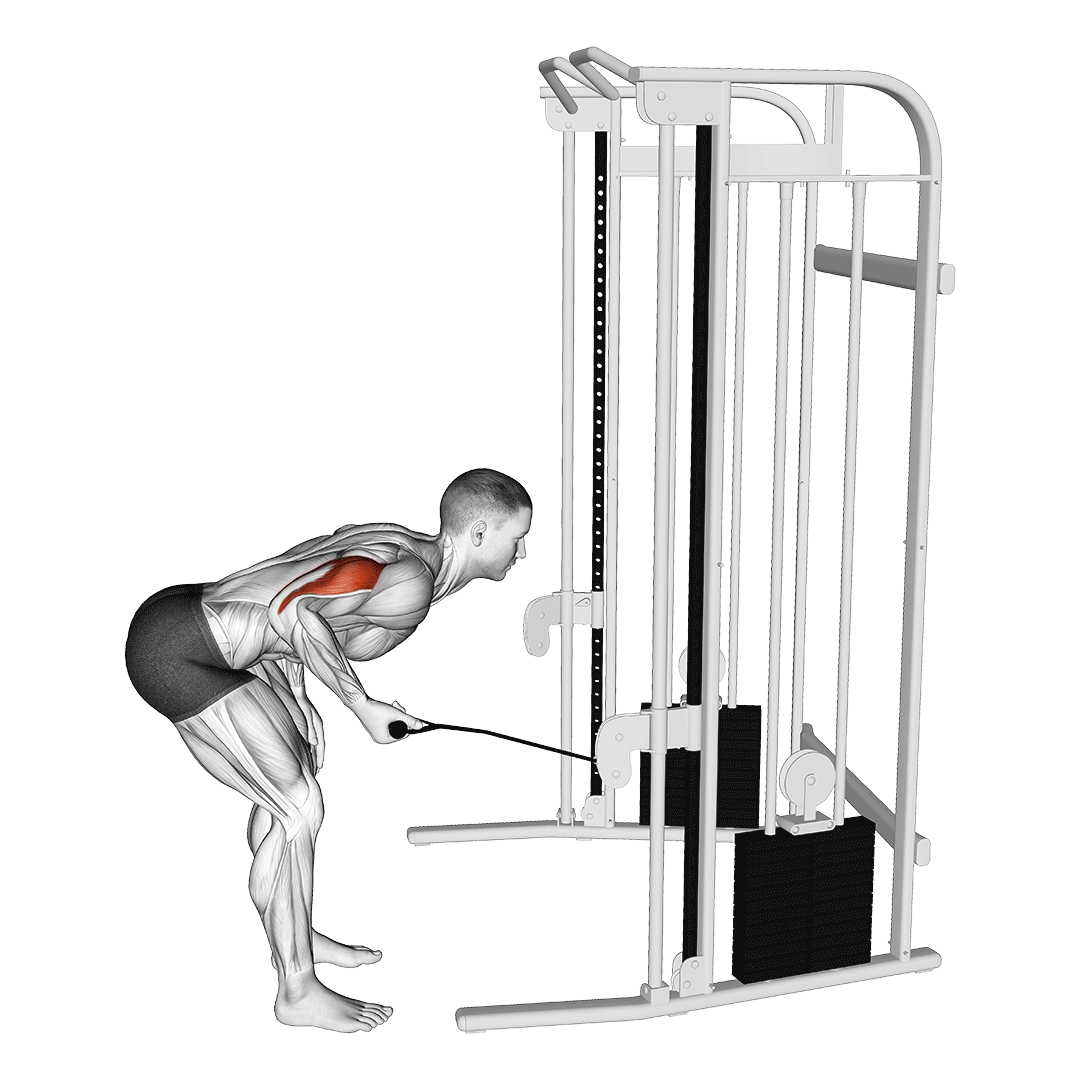
Like many other triceps exercises, the cable tricep kickback is a single-joint isolation exercise that shines best when performed for high-volume sets with a relatively low amount of resistance - hence its frequent inclusion into bodybuilding or hypertrophy-focused training programs.
As a unilateral exercise, the cable tricep kickback will feature the use of a single-grip handle.
Muscles Worked by Cable Tricep Kickbacks
As an isolation exercise, cable tricep kickbacks will solely train the triceps brachii, focusing especially on the lateral or outer head of the muscle group.
Benefits of Cable Tricep Kickbacks
Apart from the usual benefits of growing the triceps, the cable tricep kickback is particularly useful as a novice level exercise due to its low impact, low complexity and relatively short range of motion - all factors that, while somewhat limiting in terms of training stimulus - can help teach new exercisers how to recruit their triceps properly.
Furthermore, tricep kickbacks are performed unilaterally, allowing the lifter to focus better on working one side of the body at a time.
How-to do Cable Tricep Kickbacks
To perform a repetition of the cable tricep kickback, the lifter will grip the handle with one hand, bending at the waist until the torso is almost perpendicular to the ground. The cable housing should be somewhat lower than the hips.
Keeping the elbow against the sides of the torso as it is bent forwards, the lifter will then pull the hand behind themselves until the arm has reached a state of terminal extension.
Squeezing the tricep as the arm remains fully extended, they will then slowly return the hand to its original position, keeping the elbow in place the entire time. This completes the repetition.
In Conclusion
Though we’ve listed the most effective cable triceps isolation exercises in this article, keep in mind that other exercises in your program might also be hitting the triceps to a significant degree.
Compound movements like the bench press or push-up are just as likely to hit the triceps as cable pushdowns, for example, and it is important to account for this when structuring your workout.
Otherwise, try out any of the movements listed here, and see if they fit your needs.
References
1. Schwarznegger, Arnold. Dobbins, Bill. (Nov 5, 1999) “The New Encyclopedia of Modern Bodybuilding : The Bible of Bodybuilding, Fully Updated and Revised EBook Edition” Simon and Schuster Publishing ISBN-10: 3200328452
2. McArdle W. D., Katch F. I., Katch V. L. (2015). Essentials of Exercise Physiology. Philadelphia, PA: Lippincott Williams & Wilkins.
